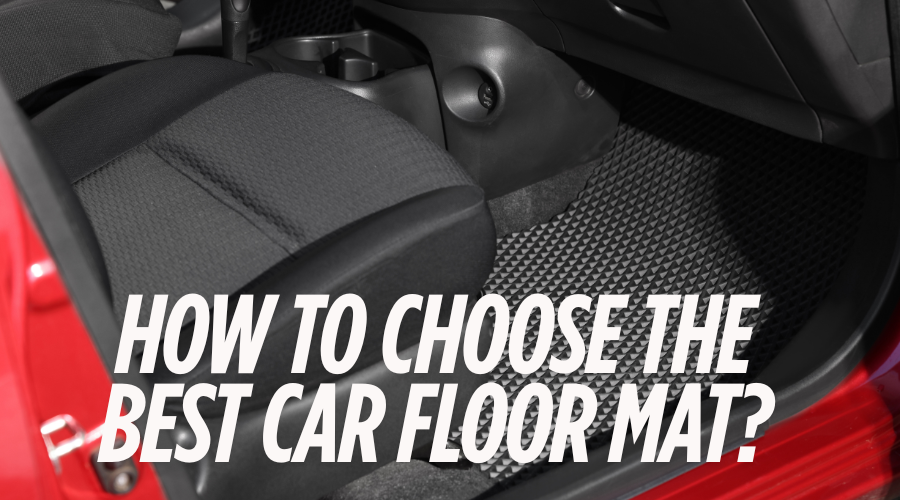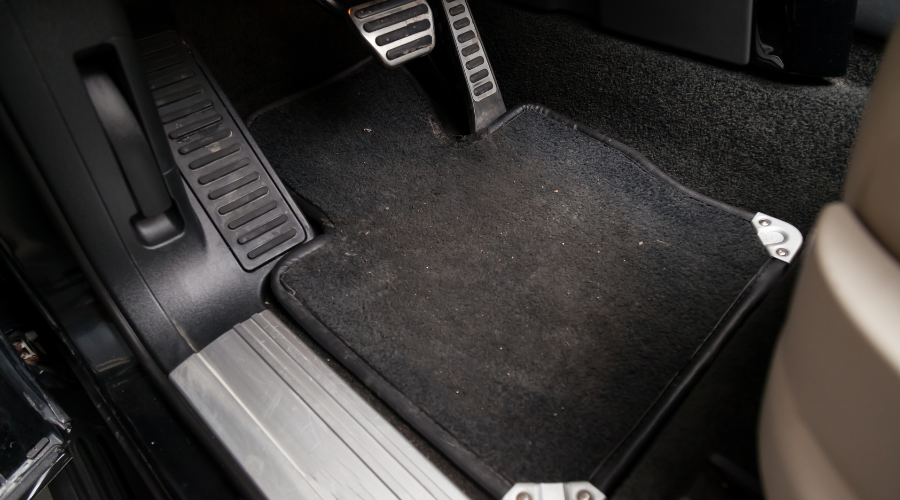
Jun 4,2025
Floor mats in your car are essential for keeping it clean and safe. Proper mats save money and maintain value when selling. With various types available, choosing the right one can be challenging.
Carpeting in your car gets messy from all the dirt, water, food stains, and usual wear and tear. If not protected, the carpet will easily stain, take on odors, and become worn out. Floor mats protect the inside of the car from dirt on your shoes.
Cleaning your car’s interior is made convenient by having floor mats. Instead of cleaning carpet stains, remove the mats, clean them, and then place them back on the floor. You save yourself time, and you always have a nice-looking car.
Besides keeping them clean, floor mats lessen risks by allowing your feet to grip the pedals and reducing your chances of slipping in the driver’s seat. They also reduce the amount of noise and vibration that reaches the passenger area.
Rubber mats are commonly preferred because they offer numerous benefits. Because of their ability with water and mud, they’re ideal vehicles for seasons of rain or snow. If you rinse them with water, these mats come out looking like new. Different thicknesses and textures are standard among rubber mats. Mat thickness can mean better protection and sturdiness, but textured designs are usually safe and suitable for wiping dirt away.
Rubber mats are known for their appearance, which is the main disadvantage. They often are not as stylish as luxury cars, so they may not impress as much.
Carpet mats give the cleanest appearance and feel the most comfortable. These soft and comfortable mats will complement your car’s interior. The mats are designed and colored to match your vehicle’s interior.
Clean carpet mats more frequently than rubber ones to avoid stains and odors. Most people who prefer style and don’t have to contend with harsh weather tend to opt for these.
All-weather mats are tough like rubber and also look great. They are made from materials that prevent them from cracking in extremely high temperatures and also remain flexible. Most of these mats have a raised outer edge to stop spills or messes from spreading.
All-weather mats can withstand various weather conditions and are highly reliable over time. They are more expensive than basic rubber mats but provide better quality and look better too.
Floor mats today are most often made using thermoplastic elastomer (TPE) or synthetic rubber. They are not harmed easily by chemicals, UV rays, or heat exposure, whether high or low. Recycling them makes them more environmentally friendly.
Compared to natural mats, synthetic mats are designed to last, and you can usually maintain their shape for a longer period. The cracking and hardening process with these materials is much slower than some other types.
Natural rubber mats are very flexible and strong. They fit your vehicle’s floor shape smoothly and give a firm grip. Natural rubber breaks down more rapidly in response to significant temperature changes.
These mats break down naturally, appealing to environmentally conscious consumers. Though they are more expensive, they perform much better than many synthetic options.

Universal mats are designed for use in various types of vehicles. Most auto parts stores have them, and they tend to be less expensive than the original parts. Such protective mats are suitable for the floor’s basic safety, but may not cover all the areas.
Commonly, universal mats have to be customized to match the roof size. They could have gaps that leave a part of your car exposed.
The fit of custom mats is chosen to match your car’s particular make, model, and year. They cover everything and slip on comfortably around pedals, seat tracks, and other things on the floor. They are more polished-looking and offer better security.
One reason to pay a little more for custom mats is that they give better protection and a neater fit. They usually stay positioned where you want them better when you’re using them.
A high-quality floor mat requires a backing with a textured or rubber surface that grips the carpet of your car. As a result, the mats stay in place while driving, preventing them from blocking the operation of pedals and causing accidents.
Several mats feature clips or hooks that attach to pre-existing anchor points in your car. They make sure the installation is as secure as possible.
Water and spills on lifted-edge mats are kept from flowing onto your car’s carpet. If you’re constantly eating or drinking while driving or live in an area with frequent rain or snow, this feature is significant.
Ensure your border is at least half an inch tall to prevent spillage. Some top-quality mats are made with an edge that exceeds two inches, providing maximum protection.
Consider how easily you will be able to care for and clean the mats before purchasing them. A surface without many textures is easier to clean, but a textured surface can hold onto dirt.
Mats designed for machine washing are by far the most convenient, though most household washers are too small for large floor mats.
When it snows or freezes, mats with deep channels will be able to catch and hold the melted ice and snow. Rubber or all-weather mats are more effective for these kinds of weather than carpet.
Choose a mat that does not become stiff when it’s cold. The stiffness and brittleness of some materials when it is cold cause them to be less valuable.
If your climate is often wet, choose mats that are highly effective at repelling water and allowing it to drain away. The water can move through perforated mats, which cover and protect the carpet underneath. Antimicrobial mats are a good choice for damp areas to keep mold and mildew away.
Floor mats cost under $20 for basic models and over $200 for premium, custom-made options. Your spending should reflect how long you plan to keep the car.
Affordable rubber or vinyl mats provide sufficient protection for your vehicle. They’re nice for older cars or in situations where you care about temporary results. The estimated lifespan of a stability mat is typically around one to two years.
These mats typically have a long lifespan and are visually appealing. You will usually find that they include raised sides and a slip-proof backing. Most mid-range mats will provide good service for up to five years.
With advanced designs, superior materials, and the right fit, high-end mats stand out from the rest. Most come with a warranty and should last as long as your car does. New or luxury cars might benefit from premium mats.
Installing your mats properly guarantees that both you and the mats are kept safe and they function as needed. No mat should have unreasonable bunching or curling at any part of its edge. Ensure the design doesn’t affect how you can press the pedal.
There is a big difference in mat life with regular maintenance. Remove dust and debris from your mat at least once a week by vacuuming or shaking it. Rinse mats monthly or whenever they are dirty with some mild soap and water. Ensure the parts are dry before replacing them.
Store backup mats in a cool, dry place out of direct sunlight. Fold the cloth slowly to ensure no creases remain in the fabric.
Think about how you drive, the climate where you live, and the type of vehicle you have when deciding. If you tend to carry dirty goods or have kids, make sure your car can be easily cleaned and offers the best protection. A luxury vehicle is valued for its style rather than its longevity.
Check what other people with the same car say about their floor mats. Many online stores allow you to return items if you’re not satisfied. Floor mats are a way to keep the value of your vehicle high for many years. Protective mats for your carpet will be worth it when you trade or sell your car.
1. Do all car floor mats have the same size?
No. Certain mats are designed for multiple cars, while others are specifically shaped to fit your vehicle’s floor. Check product size before purchasing.
2. Is it possible to clean carpet mats in a washing machine?
It is not a good choice. Most carpet mats are significantly larger and heavier than they need to be. Using a vacuum and a carpet cleaner is a better way to clean.
3. When should I clean my car mats?
Wash your mats every two weeks, or more often if it rains heavily or they get dirty from use.
4. Is it worth buying expensive, custom-fit mats?
Yes, to get the finest security, style, and fit. They don’t move, protect a bigger area, and usually last a long time.
5. Is it possible to fit a mat in the front seat as well as the rear seat?
A few mats are sold as sets, so they come with both the front and back versions. A few may be sold as single products instead. Always inspect the contents of the package.